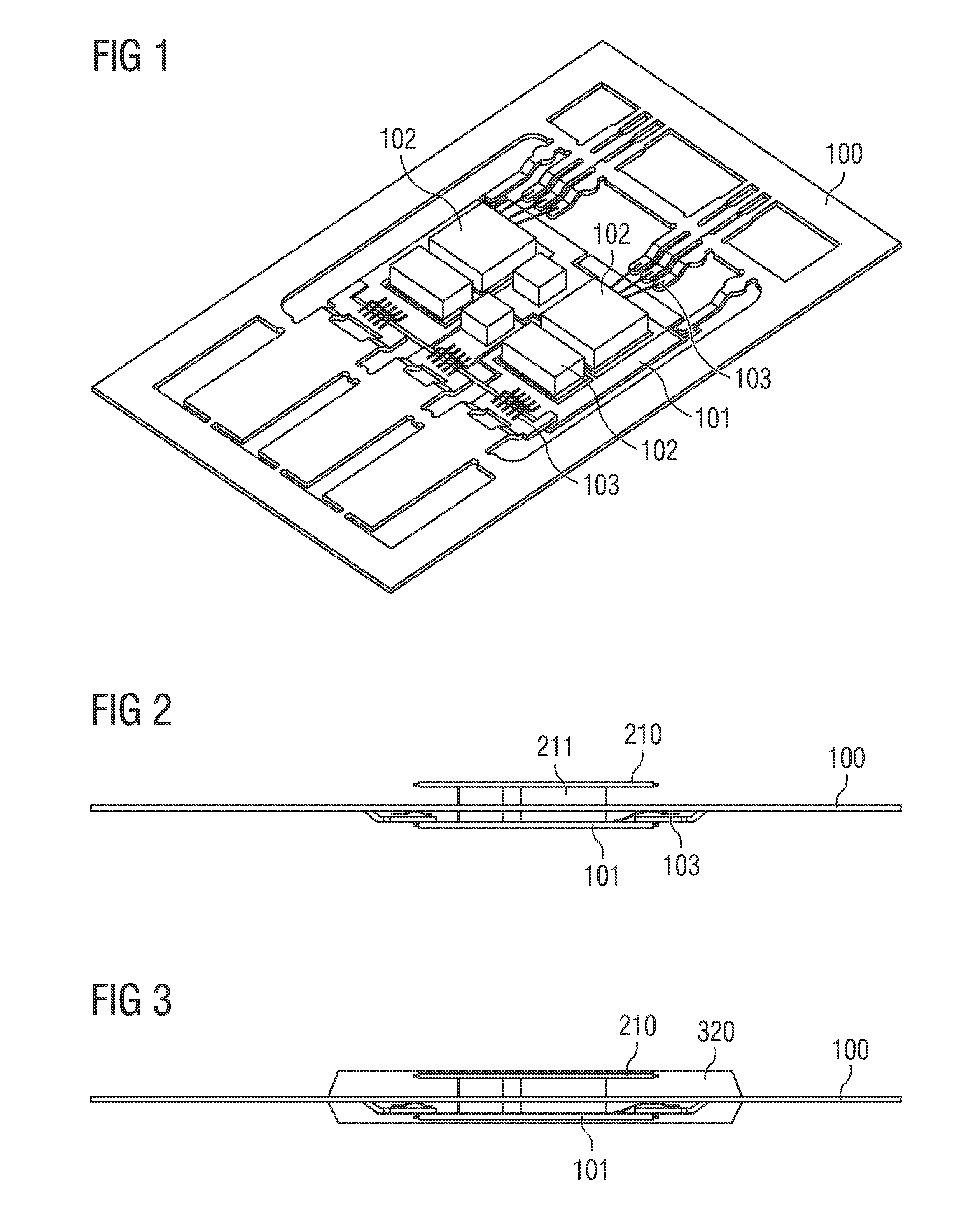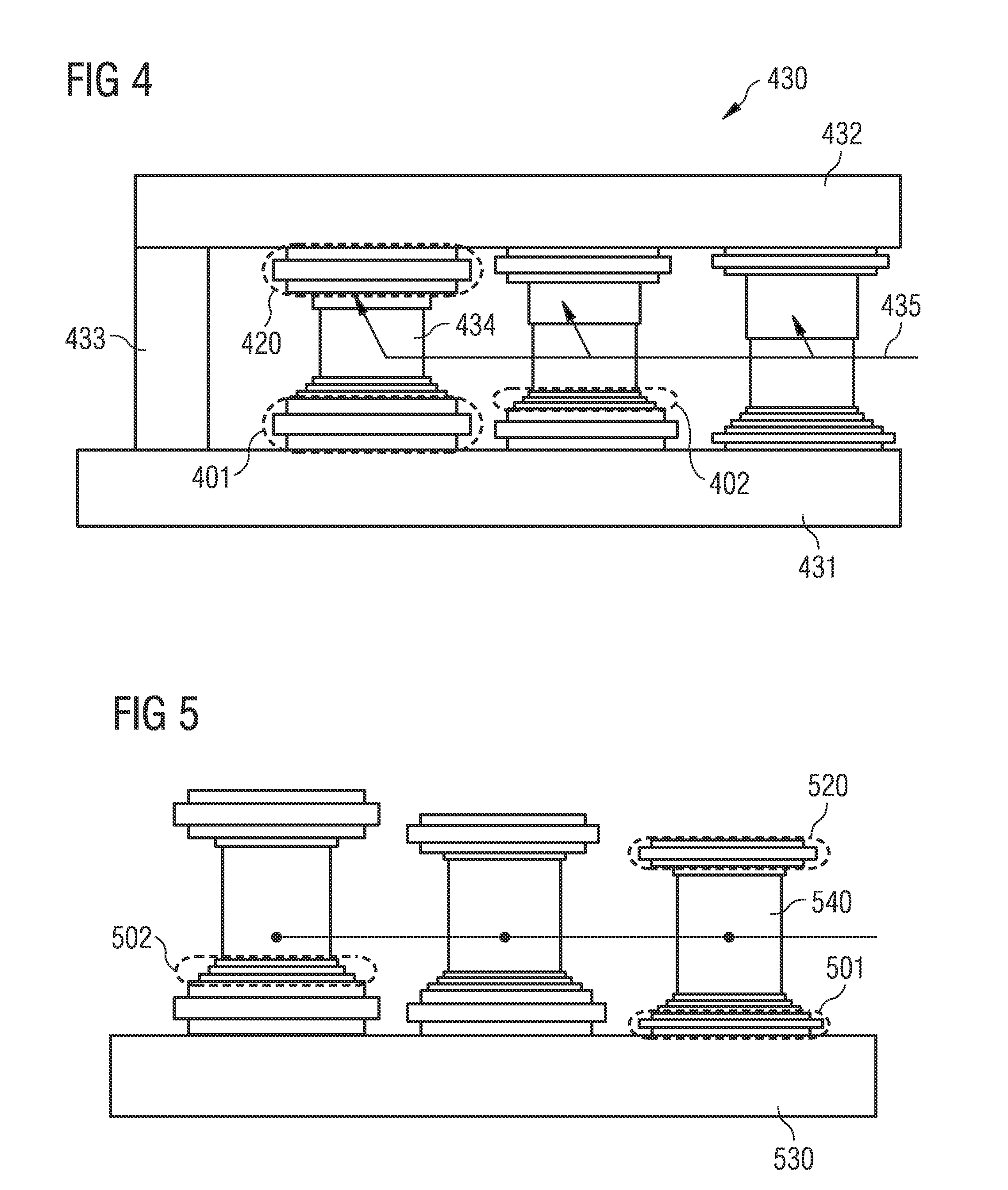Power module comprising two substrates and method of manufacturing the same
a technology of power modules and substrates, applied in the field of power modules, can solve the problems of high variation of the total thickness of the completed modules, and achieve the effects of reducing the thickness of the connecting layer, improving accuracy, and increasing manufacturing yield
- Summary
- Abstract
- Description
- Claims
- Application Information
AI Technical Summary
Benefits of technology
Problems solved by technology
Method used
Image
Examples
Embodiment Construction
[0018]In the following, further exemplary embodiments of the methods and of modules will be explained. It should be noted that embodiments described in the context of a method may also be combined with embodiments of the modules and vice versa.
[0019]For example, the compensation layer may be a thickness compensation layer or in other words a layer adapted to compensate for thickness variations of layers or substrates arranged above or below the compensation layer. In particular, the first substrate may be a bottom substrate and / or the second substrate may be a top substrate. The thickness of the compensation layer or compensation structure may particularly be measured perpendicular with respect to main surfaces of the substrates and / or of the module. In particular, the reduction of the thickness of the compensation layer from the first thickness to a second thickness may be performed without grinding and / or without polishing and / or without abrasive processes. In particular, it shoul...
PUM
 Login to View More
Login to View More Abstract
Description
Claims
Application Information
 Login to View More
Login to View More - R&D
- Intellectual Property
- Life Sciences
- Materials
- Tech Scout
- Unparalleled Data Quality
- Higher Quality Content
- 60% Fewer Hallucinations
Browse by: Latest US Patents, China's latest patents, Technical Efficacy Thesaurus, Application Domain, Technology Topic, Popular Technical Reports.
© 2025 PatSnap. All rights reserved.Legal|Privacy policy|Modern Slavery Act Transparency Statement|Sitemap|About US| Contact US: help@patsnap.com



